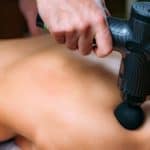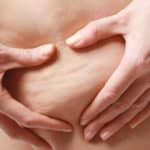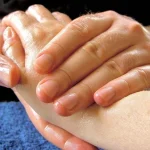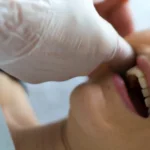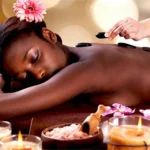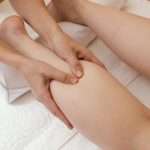If you’ve ever pressed into a tight muscle and felt a strange crunching, crackling, or gritty sensation, you’re not alone. Many people notice that their muscles “crunch” during massage—especially when working on sore shoulders, tight glutes, or chronic knots. These sensations are often linked to myofascial trigger points, dehydrated tissue, or friction between layers of muscle and fascia. In this guide, we’ll explain why muscles crunch during massage, what these sensations really mean, and how to safely release tight, crunchy knots for long-lasting relief. Many people are surprised by how often muscles crunch during massage, especially when working on tight or dehydrated tissue.
Table of Contents
What are Muscle Knots?
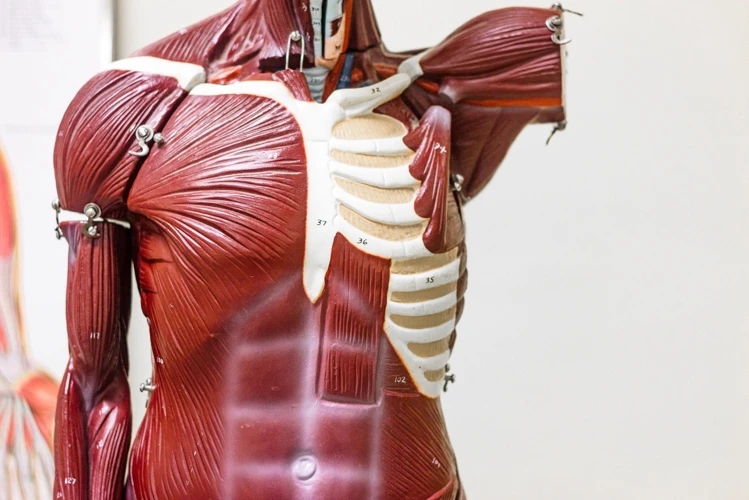
Muscle knots, also known as myofascial trigger points, are areas of tightness or tension that occur within a muscle or its surrounding fascia. These areas can cause pain, discomfort, and tightness when touched or pressed. Muscle knots are commonly found in the shoulders, neck, back, and arms. These knots can create gritty or crackling sensations — the feeling many describe when muscles crunch during massage.
How to Relieve the Pain?
There are several ways to relieve the pain from muscle knots. For example, heat and cold therapy can be used to reduce inflammation and relax the muscle. Massage, stretching, and foam rolling can also help to reduce muscle knots and improve overall flexibility. In addition, over-the-counter pain relievers such as ibuprofen and acetaminophen can also be used to reduce pain and inflammation.
What is Muscle Cramping?

MMuscle cramping occurs when a muscle contracts suddenly and cannot relax, creating sharp, intense pain and temporary loss of movement. Unlike muscle knots—which form gradually from tension—cramps tend to strike quickly and can affect any muscle group, especially the calves, feet, hands, and abdomen.
Cramps are commonly triggered by dehydration, electrolyte imbalances, fatigue, poor circulation, or overstimulation of the nerve that controls the muscle. They’re also more frequent in older adults, athletes, pregnant women, and individuals with certain medical conditions.
Typical symptoms include a visibly tight or hardened muscle, sharp pain, and involuntary spasm. While most cramps resolve within seconds to minutes, lingering tenderness is normal.
Treatment focuses on gentle stretching, massage, heat therapy, and correcting hydration or electrolyte levels. Preventing muscle cramps involves staying well-hydrated, maintaining regular stretching routines, and avoiding sudden spikes in activity or overuse. If cramps become frequent or severe, a clinician should evaluate potential underlying causes.
What Causes Muscle Knots?

- Tight Muscles or Muscle Imbalances: Muscle knots can be caused when the muscles become tight, either from lack of use or repetitive motions. Tight muscles can form knots when they aren’t able to move freely, causing pain and discomfort. Additionally, muscle imbalances can lead to muscle knots, as one muscle group might be over-compensating for another that is weak.
- Inactivity: Inactivity can cause muscle knots, as muscles that are not used are more likely to become tight and form knots. Prolonged sitting or standing, for example, can cause the muscles in the legs, back, and neck to become tight and lead to knots.
- Stress: Stress can lead to muscle knots, as anxiety and tension can cause muscles to become tight and lead to knots.
- Injury: Injury can cause muscle knots, as the body’s natural response to injury is to tense up the muscles around the injury site, leading to knots.
What Does a Crunched Muscle Feel Like?
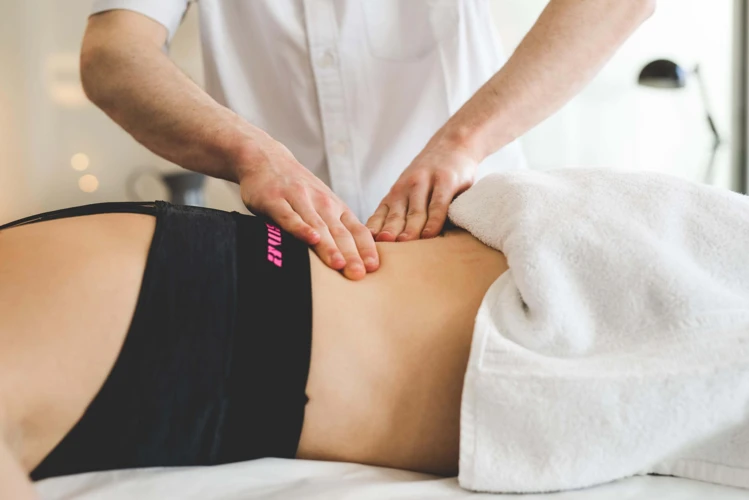
- Sharp Pain: A crunched muscle can cause a sharp pain when pressure is applied.
- Tightness: The muscle will feel tight and tender to the touch.
- Aches: The muscle may ache during or after movement.
- Spasms: A crunched muscle may cause involuntary muscle contractions.
- Numbness: It may also cause numbness or tingling in the affected area.
- Tenderness: The muscle may be tender to the touch, feeling sore or bruised.
- Stiffness: The muscle will feel stiff and difficult to move or stretch.
- Weakness: Crunched muscles may also cause weakness in the affected area.
⭐ Why Muscles Crunch During Massage
Many people notice a gritty, crackling, or crunchy feeling when pressure is applied to tight areas—and it can be surprising. But in most cases, the sensation is harmless. The reason muscles crunch during massage often comes down to how the fascia, muscle fibres, and soft tissues respond to tension.
One common cause is myofascial adhesions, where layers of fascia stick together due to stress, dehydration, poor posture, or overuse. When pressure is applied, these stuck layers can move against each other, creating a subtle crunching or sand-like texture under the fingers.
Another reason muscles may crunch is the presence of trigger points—small, tight knots that change the texture of the tissue. Pressing into a trigger point can produce a gritty or popping sensation as the knot begins to release.
Some people experience crunching due to crepitus, which occurs when tiny gas bubbles shift within the tissue or when stiff muscle fibres rub together. This is more common in areas that haven’t been moved or stretched regularly.
Finally, dehydrated fascia can make the tissue feel dense or crackly. As massage increases circulation and warms the area, these sensations often decrease.
Understanding why muscles crunch during massage can help you feel more comfortable with the process, and it often indicates that the tissue is responding to pressure and may benefit from continued release work.
Benefits of Massage When Muscles Crunch During Massage
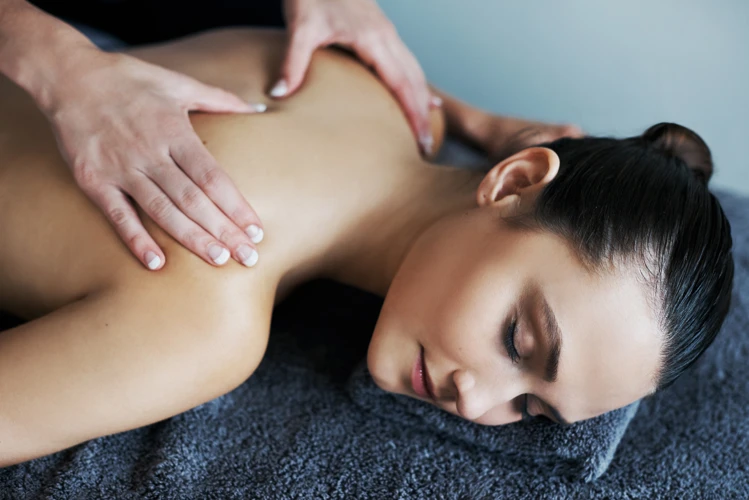
Massage is an effective way to reduce pain and tension in muscle knots. The main benefit of massage is that it increases blood circulation to the affected area, which helps to reduce inflammation and pain. It also helps to reduce muscle tightness and spasms, as well as improve flexibility. Additionally, massage can help with relaxation, which can further reduce pain and discomfort. Massage can also help to break down scar tissue, which can also help to reduce pain and tension. Finally, massage can help to reduce stress and anxiety, which can also contribute to reducing pain and tension.
How to Relieve Muscle Knot Pain
Self-Massage for Muscle Knots
Self-massage is one of the quickest ways to ease muscle knot pain. Start by warming the area with light pressure, then gradually increase intensity as the tissue softens. Use slow circular motions or apply sustained pressure for 10–20 seconds to help the knot release. If the area is too tender to press directly, work around the surrounding fascia first — this often encourages the knot to relax without sharp discomfort. ✨
Professional Massage Therapy
A professional massage therapist can identify trigger points, assess surrounding tension patterns, and use techniques such as myofascial release, friction, or trigger-point therapy. This is especially helpful for deeper or long-standing knots that don’t respond to self-work. Regular sessions may also prevent recurring tightness by improving tissue mobility and circulation. 💆♀️
Targeted Stretching
Gentle stretching helps lengthen tight muscle fibres and restore comfortable movement. Hold each stretch for 20–30 seconds without bouncing, focusing on the muscles surrounding the knot. Stretching after massage or heat therapy is even more effective because the tissue is warm and more responsive. 🧘♀️
Heat Therapy to Relax Tight Tissue
Heat increases circulation and helps soften stiff fascia, making stubborn knots easier to release. Apply a warm compress, heat pad, or take a hot shower for 10–15 minutes before massage or stretching. Heat works especially well when knots feel dense, crunchy, or resistant to pressure. 🌡️
Medication for Inflammation (When Appropriate)
Over-the-counter anti-inflammatory medication may help reduce swelling or irritation if a knot is extremely painful. This approach should be used sparingly and only under a doctor’s guidance. While medication offers temporary relief, pairing it with massage, stretching, and hydration addresses the underlying tension more effectively. 💊
Prevention of Muscle Knots
Stretching: Regular stretching is essential to keep muscles flexible and healthy. Stretching helps to lengthen your muscles and keep them from tightening up, which can lead to knots.
Exercise: Regular physical activity helps to keep your muscles strong and healthy. Make sure to include both aerobic and strength-building exercises in your routine.
Posture: Poor posture can lead to muscle tension and pain. Make sure to stand and sit up straight, with your shoulders back and down.
Sleep: Getting enough quality sleep is important to relax your muscles and keep them healthy. Aim for 7-9 hours of sleep each night.
Massage: Regular massages can help to relieve muscle tension and reduce the risk of developing muscle knots.
Nutrition: Eating a healthy, balanced diet can help to support your muscles. Make sure to include plenty of fruits, vegetables, and lean proteins.
Hydration: Drinking plenty of water helps to keep your muscles hydrated, which can reduce the risk of knots.
Frequently Asked Questions
What causes muscle knots?
Muscle knots—also known as myofascial trigger points—form when muscle fibres become overstimulated, tense, or unable to relax. This often happens due to overuse, poor posture, stress, dehydration, or repetitive movements. When the surrounding fascia tightens, blood flow decreases and the tissue becomes irritated, creating a small, palpable knot. These trigger points can be tender, radiate pain, or produce a crunchy feeling during massage as the tight fibres and fascia are compressed.
How can I tell if I have a muscle knot?
A muscle knot typically feels like a small, firm spot within the muscle that is tender to the touch. Pressing on it may cause local pain, referred pain, or a familiar aching sensation. Some people notice reduced flexibility or tightness around the area. During massage, knots may feel gritty or produce a slight crunching sensation due to tension in the fascia. If pain persists or radiates, a therapist can confirm whether it’s a true trigger point.
What are the benefits of massage for relieving muscle knots?
Massage helps release muscle knots by increasing circulation, loosening tight fascia, and interrupting the pain–tension cycle. Techniques like trigger point therapy, friction, and myofascial release soften dense tissue and improve range of motion. Massage may also reduce inflammation, calm the nervous system, and stimulate endorphin release, which naturally decreases discomfort. Over time, regular massage can help prevent recurring knots by keeping the tissue more mobile and hydrated.
Are there any risks associated with massaging muscle knots?
Massage is generally safe, but working on muscle knots can sometimes cause temporary soreness, tenderness, or bruising—especially if the tissue is very tight. Individuals with conditions such as clotting disorders, nerve compression, or acute injuries should use caution and may need medical clearance. Too much pressure can irritate the area rather than relieve it, so communication is important. If pain becomes sharp, numb, or radiating, the pressure should be reduced immediately.
What exercises or stretches help prevent or relieve muscle knots?
Gentle stretching improves flexibility and helps prevent knots from forming, while strengthening exercises provide better support for surrounding muscles. Helpful movements include hamstring, quad, hip-flexor, and chest stretches; glute bridges; lateral band walks; and core stability work. Yoga can also relax tight fascia and improve posture. Self-massage tools like foam rollers or tennis balls help release tension between professional sessions by breaking up adhesions and improving circulation.
Is it normal for muscles to crunch or crackle during massage?
Yes — in most cases, the crunching or crackling you feel during massage is completely normal. These sensations can come from tight fascia, small gas bubbles moving within soft tissue, or friction between dehydrated muscle layers. Trigger points may also create a gritty or sand-like feeling under pressure. As the tissue warms and circulation improves, these sensations often decrease. If the crunching is accompanied by sharp pain, it’s best to ease the pressure.
Can dehydration cause muscles to feel crunchy or tight?
Dehydration can absolutely make muscles feel tighter, denser, or even crunchy during massage. When the body lacks fluid, fascia becomes less elastic and muscle fibres struggle to glide smoothly against each other. This stiffness increases friction and can intensify the gritty sensation you feel under pressure. Staying hydrated helps maintain healthy muscle function, reduces adhesions, and supports easier, smoother release during massage therapy.

Conclusion
Muscles that crunch during massage can feel unusual, but they’re often a normal sign of tension, trigger points, or friction in tight fascia. Understanding why muscles crunch during massage helps you recognise what’s happening beneath the surface and makes the experience far less alarming. With proper warm-up, steady pressure, and consistent technique, these crunchy areas usually soften over time, improving mobility and reducing discomfort. If certain spots remain painful or don’t change, a qualified therapist can help assess deeper patterns of tension and guide you toward lasting relief.
Related Links
👉 When I Massage My Neck It Crunches
👉 How to Massage Tight Muscles
👉 Massage and the Nervous System: Reduce Stress & Restore Balance
📚References
- Verywell Health – What Are Muscle Knots That Crunch Under Massage?
- NCBI – Trigger Point Therapy for Myofascial Pain Syndrome
- WebMD – What to Know About Muscle Knots
⚠️ Disclaimer:
This article is for informational purposes only and does not constitute medical advice. Always consult with a licensed healthcare provider or certified massage therapist before beginning any new treatment, especially if you have pre-existing health conditions or concerns.


